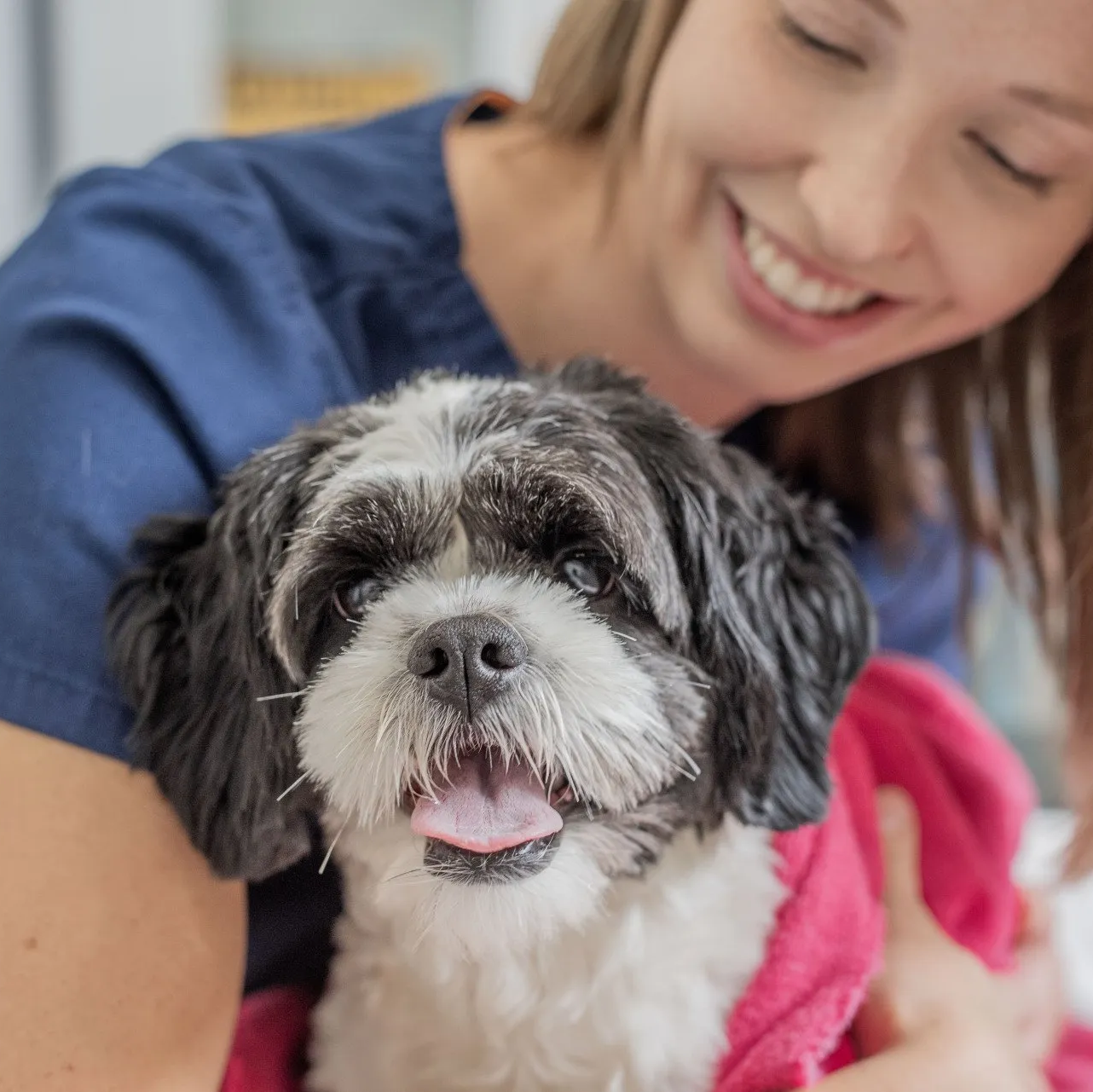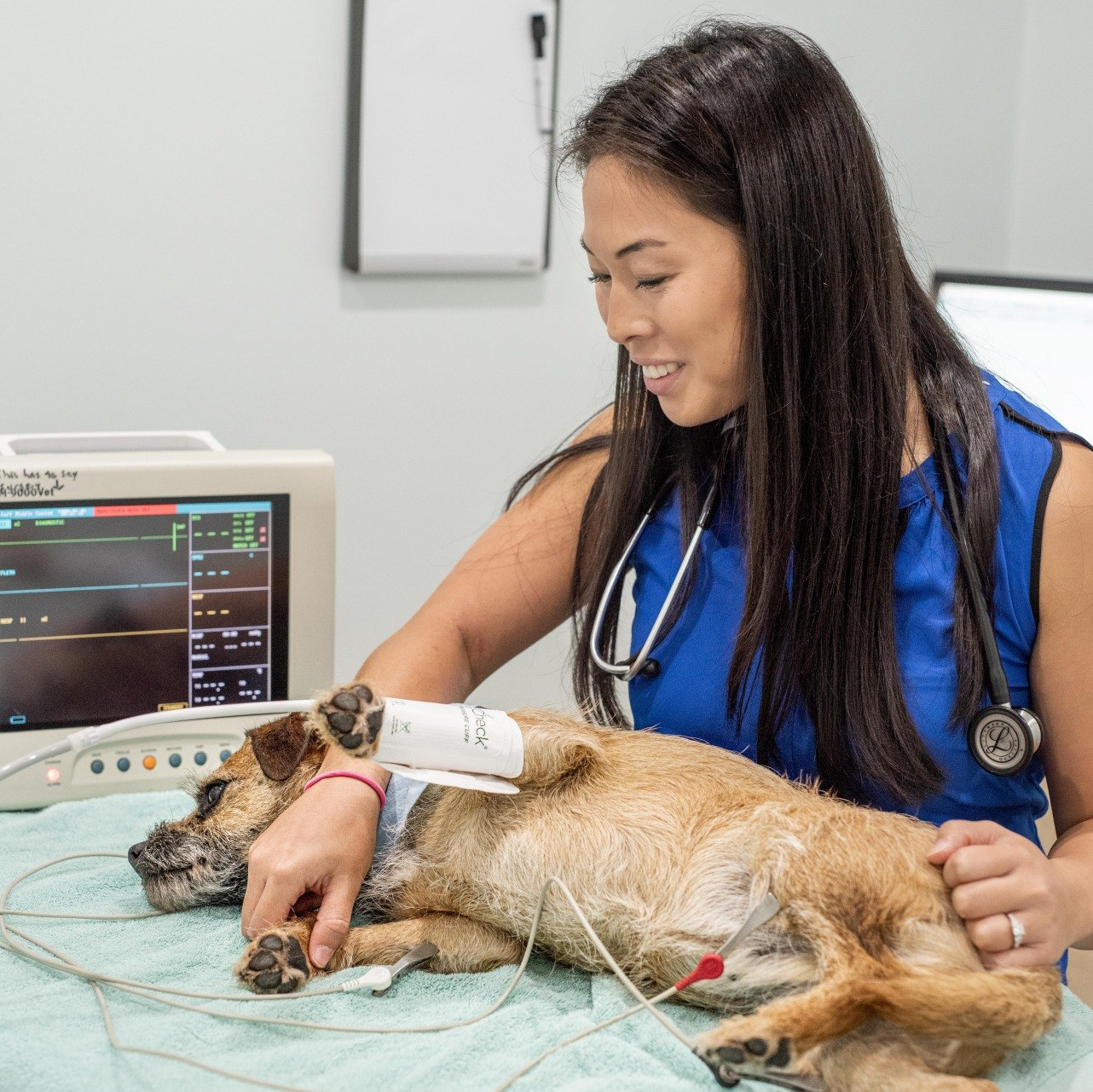SURGERY
The idea of surgery can be a stressful one for you and your pet.
However, in some cases, a surgical procedure may be required to fix problems your furry family member is experiencing. Our surgical services to pets are delivered with care, attention and expertise. We do our best to set them on the road to recovery, and support your family on that journey from start to finish. We offer a range of different surgical procedures. Each time we recommend a surgical procedure, we do so with your pet's comfort, well-being and long-term health in mind.
Before beginning the surgical process, we need to thoroughly understand the problems your pet is experiencing. This means conducting a full consultation and examination.
We will:
- Take a closer look at your pet, checking for any visual or tactile symptoms.
- Use instruments such as a stethoscope or otoscope to gain more information.
- Carry out blood tests on your pet, building up a more detailed picture of their health.
- Carry out further tests if required, such as urine and hormone tests.
Once we have all the diagnostic information, we can make a decision on which surgical process is best for your pet. This makes what could be a worrying process as clear, straightforward and stress-free as possible, as we work to achieve the best results possible from each surgery.
- Spaying
You might have considered having your female pet spayed to avoid any unwanted pregnancies, but the process can actually do far more for this important member of your family.
Spaying can help to protect your pet against some nasty illnesses. These include:
- Life-threatening womb infections
- Diseases of the reproductive organs, such as the uterus and ovaries
- Cancer of the reproductive tract or cancers associated with reproductive hormones
- Your pet will also avoid the stress and discomfort of the heat cycle.
So, what is actually involved in a spay (ovariohysterectomy)?
First, your pet undergoes general anesthesia to ensure she doesn't feel any discomfort during the procedure. During the surgical procedure, your pet's ovaries and uterus are removed from the abdomen to prevent future pregnancies and the production of hormones via the reproductive tract.
While under anesthesia, your pet's vital parameters, such as heart rate and pattern, respiration, blood oxygen levels and blood pressure, are continuously monitored.
Your pet will receive close monitoring and constant attention during her recovery from her procedure. Your family will be supported throughout the post operative period to ensure your pet can return to her happy, active self.
- Neutering
If you don't want your male cat or dog to breed, and you want him to be able to mix safely with female pets in your neighborhood, then neutering is the right and the responsible choice. Neutering your pet also has many health benefits such as preventing diseases associated with the reproductive tract.
Neutering can:
- Eliminate the risk of testicular cancer
- Reduce the risk of prostate disease and cancer
- Eliminate the risk of sexually transmitted diseases
- Eliminate embarrassing or antisocial behaviors, such as humping, fighting and spraying
- Help to keep your pet safe, as he is less likely to roam far from your home
Neutering is a surgical procedure, during which your pet's testicles are removed. This prevents the production of hormones, such as testosterone, which can result in "male tendencies." Contact our team to discuss neutering for your pet.
- General and Local Anesthesia
GENERAL ANESTHESIA
Patient well-being and comfort are always among the top priorities when it comes to surgery. This is why we may decide to apply a general anesthetic to your pet to help them sleep soundly and minimize discomfort throughout and after the surgical procedure.
We understand that many people may have concerns about the effects of general anesthesia. With this in mind, we take the time to explain the risks and the benefits of anaesthesia and support you as a pet parent throughout this aspect of treatment.
We utilize anaesthetic protocols based on recommendations from experts to provide the most effective and safe outcomes for our patients. Our anaesthetic protocols are designed for each individual patient's medical needs with special consideration to their age, procedure and pain management requirements. To further minimize anaesthetic risk, we have the facilities to conduct thorough tests and examinations to make sure the patient can be safely anesthetized.
Before your pet fully undergoes an anaesthetic, your pet will recieve pre-medication which is combination of a mild sedative and pain medication. This is to reduce stress and discomfort before the procedure and allows us to use lower concentrations of the main anesthetic drug. A gas-based anesthetic is administered through your pet's windpipe to achieve a state of unconsciousness. Careful pain management throughout the whole process, helps to minimize discomfort for your pet before, during and after the procedure. Once the process is complete, we bring your pet back to consciousness and continue monitoring and assessment as the recovery phase begins.
LOCAL ANESTHESIA
There are several kinds of anesthesia, including local anesthesia. Local anesthesia does not make your pet completely unconscious, but is a very useful pain management tool in various procedures.
With this kind of anesthesia, nerve impulses are blocked so they cannot reach receptors in your pet's brain. The anesthetic numbs the affected area where it is applied. It can be used to prevent discomfort in minor and major procedures.
Local anaethesia can especially helpful for patients who are not anaesthetic candidates. There are a number of different factors that may impact the effectiveness and safety of the anesthetic. These include your pet's age and any underlying health conditions. We will discuss all of this with you during the initial consultation.
- Soft Tissue Surgery
We provide surgical treatment for soft tissus conditions, damage and injury. Soft tissue refers to any material in your pet's body that is not made up of bone or cartilage. This includes muscle and skin.
If you notice a change in how your pet is moving or acting, or if you encounter a lump or another abnormality somewhere on their body, please call our team directly. We will carefully assess your pet with a comprehensive physical exam before deciding whether or not surgery is required.
There are a number of circumstances in which surgery is the treatment of choice:
- The removal of lumps and masses
- The removal of certain types of cancerous tumors
- Therapeutic cleaning of the ear canal to treat infection
- Treatment of deep or infected wounds.
Our team carries out surgical treatments expert care and compassion, providing individualized care and pain management to address your pet's specific needs. With comprehensive facilities, equipment and techniques, we give your pet the best chance of recovery, supported by aftercare instructions and follow-up checks and examinations.
Patient Monitoring
With our team, your pet is in safe hands every step of the way. We monitor all of our surgical patients very carefully. This means your pet's vital signs such as your pet's heart rate, temperature and respiration rate will be closely monitored so we can respond swiftly and effectively if required.
Anesthetized patients experience a drop in body temperature because of heat loss associated with the anesthetic medications and surgical procedures. Patient warming is now recognized as one of the most valuable enhancements to surgical patient care and significantly helps improve patient recovery and surgical outcomes. Our clinic uses the Hot Dog Patient Warming System which is among the most advanced patient warming systems ever developed to help keep your pet warm and comfortable during their procedure.
We do everything we can to minimize risk when we use anesthetic. Close monitoring allows us to respond to potential problems before they occur. Our surgical team will keep track of not only your pet's vital signs but their blood pressure and oxygen saturation throughout the procedure.
Street Address : 1026 Speers Road
City : Oakville
State / Province : Ontario
Postal / Zip Code : L6L 2X4
HOURS
Monday: 9:00 am - 6:00 pm
Tuesday: 9:00 am - 6:00 pm
Wednesday: 9:00 am - 7:00 pm
Thursday: 9:00 am - 5:00 pm
Friday: 9:00 am - 5:00 pm
Saturday: Closed
Sunday: Closed
SERVICES
© Copyright 2024 - All Rights Reserved - Mac Animal Clinic | Cancellation Policy | MyPortal™



